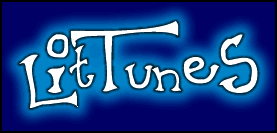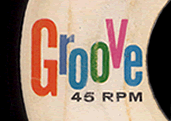|


Joys and
Heartbreaks:
How the Blues
Inspires Writing
and Opens a Pathway
to the Study of Poetry, Music, and History.
By Will Sewell
A lot of peoples wonder, ‘what is the blues?’ I hear a lot of people saying ‘the blues, the blues,’ but I’m gonna tell you what the blues is. When you ain’t got no money, you got the blues. When you ain’t got no money to pay your house rent, you still got the blues. A lot of peoples holler about ‘I don’t like no blues,’ but when you ain’t got no money, and can’t pay your house rent and can’t buy you no food, you damn sure got the blues. If you ain’t got no money you got the blues, because you’re thinking evil. That’s right. Any time you’re thinking evil, you’re thinking about the blues.
— Howlin’ Wolf (as cited in Wall, n.p.)
Introduction:
Blues is a powerful music genre
originating in 19th century African-American slave songs. Blues, of course, evolved over the years into a number of distinctive phases and sounds. In fact, jazz and rock and roll are descendants of the blues tradition. Blues is a significant marker of United States history: each musical iteration reflects the cultural, social, and economic conditions of the times. The central blues lyric is the recounting of an individual singer’s hardships, but as Dukes observed, the blues can be inspirational, “offering its listeners commentary on myriad aspects of life ranging from male-female relations and employment status to race relations and spirituality” (2005, p. 24).
With its emphasis
on relating personal experiences, blues music can be the perfect vehicle for the adolescent experiencing the joys and heartbreaks of growing up. Better still, for the English teacher, blues music — with its emphasis of rhythm, repetition, and rhyme — serves as a wonderful genre for teaching poetry to students who may have resisted prior instruction.
The purpose of this unit
is to introduce students to the blues and help them write a blues song. Beyond that purpose, the lessons may be utilized in a variety of ways. It might serve as a segue to a poetry unit. In this case, the primary purpose would be to incite interest in poetical expression. As there are a number of rich media available, the unit might be enlarged as a study of the music itself. After students learn how to write blues music, a teacher might direct them to research the history of blues in order to describe the style of music and how it reflected the times.
Type of activity:
Individual and Group.
Grade level:
7 through 12.
Approximate time:
Three 50-minute class periods.
Objectives:
Students will pursue four objectives:
1. Develop an understanding and background of blues music through active listening and viewing.
2. Demonstrate the ability to identify blues lyric structures and patterns by creating an original blues song.
3. Demonstrate confidence in performing original song lyrics in front of class.
Materials:
Links to websites and printer-friendly handouts related to our lesson plans are available in the Resources section near the bottom of this webpage.
- Website and Handout of “How to Write the Blues” by Danny Chicago
- YouTube Video of “Conan Writes Chicago Blues Songs with School Kids”
- Handout of “What Is the Blues” by PBS
Lessons:
I Got the Writin' Blues consists of three lessons.
Lesson 1:
How to Write a Blues Song
Schema
The first stage in this lesson is to help students create schema or background about blues music. A great place to begin is through a knowledge check: asking students to define blues music.
Music
Next, introduce students to blues from the variety of media available about the genre. For instance, Conan O’Brien taught blues music to school kids on his show, and the segment is available on YouTube. Conan's "lesson," which runs just over eight minutes, humorously demonstrates how the blues helps students make personal connections.
Background
PBS (2003) offers lesson plans and supporting materials to correspond with their Martin Scorsese series, The Blues (2002). If you would like to add nonfiction reading to this lesson, their introductory article, “What Is the Blues?” will help students build background. These materials were originally sent to teachers to promote the film, and their website reposts the accompanying CD containing 15 examples and detailed descriptions of blues songs. These, too, are a wonderful way to expose students to the genre. You'll find a link to The Blues on PBS in the Resources section near the bottom of this webpage.
Prepare to Write
After students see and hear blues music performed, they will have sufficient schema to being composing their own songs. American musician Danny Chicago provides a wonderful tutorial in his song, “How to Write the Blues.” His website features the lyrics and two wonderful music videos. Using a handout of the lyrics, play one or both of the videos for the students so they can hear how blues music moves from written to oral in form.

Lesson 2:
Writing the Blues Song
Name that Tune
One way to help students focus on their writing is to have them begin by thinking of a song title or two. Conan’s “The Terrible 20” offers excellent talking points to generate ideas. Inspired by his performance, Conan’s viewers submitted terrible song titles — the twenty worst are featured on his website. If you're sensitive to vulgarity, please note that some titles may warrant previewing before dissemination to students. Although these titles are written with humor in mind, they can help students get started.
Brainstorm
With a title or two in hand, students can now brainstorm in a class discussion, focusing on the topics and life situations available to the writer of blues songs. To help jumpstart the discussion, distribute the handout, "How To Write The Blues." (It's available for download in the Resources section below.) Tell your class that Danny Chicago’s template is the ideal model for their own songs. If you're not quite satisfied with the class discussion, you might also re-play Conan’s explanation of how to write a blues song.
Now It's Time to Write
Depending upon the age-range of your students, it might be helpful to have the class write a song together. Otherwise, tell your students it's time to write the blues.
Suggestions: After a few minutes and the usual "I can't write" complaints, take a moment to review the handout. If you sense a roadblock, try writing a few lyrics in concert with your students. Use the blackboard or your multimedia projector, and keep the lyrics visible so students can reference it as a model for their own efforts.
After your students have seen the steps in operation, they should be able to move ahead with their writing. Use the rest of the class time to work individually with your budding blues writers as they compose their tunes.
Extension Activity: Research the Blues
If teachers wish to integrate research into this lesson, Wall (n.d.) has a wonderful compilation, “50 Greatest Traditional Blues Songs.” Each title is hyperlinked to either a YouTube video (if performances are available) or to Wikipedia for information about the author (if videos are not available). Some of the songs are truly fascinating in their unique historicity. For example, Memphis Minnie (1953) warns listeners about sexually transmitted diseases in her commercial, “Kissing in the Dark.” One of the few successful female blues musicians, Memphis Minnie has a fascinating history and is credited as the first blues artist to play the electric guitar.

Lesson 3:
Jamming
Go Live!
A crucial component of blues music is live performance. After students complete their compositions, celebrate their efforts by allowing time for eager performers to “publish” their work.
In this lesson, turn the class over to students for a jam session. Encourage your blues performers to speak or sing their songs to one another. If the class seems reluctant to participate, encourage them by writing and singing your own song. Another option is to have the class share their songs to partners or small groups.
Classroom performances may not be possible in every learning community, but there are many wonderful musicians in your own backyard who perform the blues. Inviting a singer or group into your school can provide further inspiration and motivation for your up-and-coming lyricists.
Resources, Links,
and Printer Friendly Documents:
PLEASE NOTE: The handouts linked here are formatted by Adobe Acrobat software, a web standard for cross-platform viewing and printing. If your browser is not Acrobat friendly, please visit this link to download the reader. It's safe and it's free and it works!
http://www.adobe.com/products/reader/
If you just can't make it work, please send us an e-mail requesting copies of the handouts in Microsoft Word.
 HANDOUT:
HANDOUT:
Danny Chicago's tune, "How To Write The Blues."
 LINK:
LINK:
Danny Chicago's web, "Danny Chicago Got the Blues in Vienna."
 LINK:
LINK:
"Conan Writes Chicago Blues Songs With School Kids" on YouTube.
 LINK:
LINK:
"The Terrible 20: Blues Song Titles" on Team Coco web.
 HANDOUT:
HANDOUT:
"What Is the Blues?" from the PBS web, "The Blues."
 LINK::
LINK::
"The Blues" on PBS includes a special section for educators, "Blues Classroom," featuring background essays, lesson plans, a blues glossary, and other resources.
 THIS LESSON PLAN PAGE:
THIS LESSON PLAN PAGE:
A printer-friendly version of this webpage is available for download.
References:
- Blues Classroom. PBS. (2003). Retrieved February 14, 2013,
from http://www.pbs.org/
theblues/classroom/essaysblues.html
- Conan writes Chicago blues songs with school kids — CONAN on TBS. (2012). Retrieved
from http://www.youtube.com/
watch?v=J7f26d-AIrM&feature=
youtube_gdata_player
- Dukes, C. (2005). Curriculum planner: “The total blues experience.” Black History Bulletin, 68(2), 24–28.
-
Erlewine, S.T. Unplugged — Eric Clapton: Songs, reviews, credits, awards. AllMusic. (n.d.). Retrieved February 14, 2013, from http://www.allmusic.com/
album/unplugged-mw0000081583
-
Harris, R. B. (2004). Middle Schoolers and the Blues. Social Studies, 95(5), 197–200.
-
How to write the blues. (n.d.). Danny Chicago. Retrieved February 14, 2013, from
http://www.dannychicago.com/
how-to-write-the-blues.html
-
The Terrible 20: Blues Song Titles. (n.d.). TeamCoco.com. Retrieved February 15, 2013, from
http://teamcoco.com/content/terrible-20-blues
-
Wall, N. (n.d.). 50 greatest traditional blues. Retrieved February 15, 2013, from http://musictodiefor.wordpress.com/
50-greatest-traditional-blues-songs/
W.S.
25 Feb 13
A B O U T T H E A U T H O R :
William C. Sewell is assistant professor in the Department of Educational Foundations and Literacy at the University of Central Missouri, where he serves as program coordinator of the Educational Foundations Core. His research interests include multimodal intertextuality, content area literacy, digital pedagogy, and middle and secondary English education. Dr. Sewell has authored or co-authored over 13 articles in peer-reviewed journals, ranging from The Journal of Educational Foundations to English Education. He has also presented at numerous regional and national conferences. His book chapter (co-authored with Dr. Christian Goering), “Multimodal Fogerty: Scoring and Scaffolding the Music of CCR to a Vietnam War Literature Unit," was just published in Finding Fogerty: Interdisciplinary readings of John Fogerty and CCR.
To contact Will, please e-mail him at wsewell@ucmo.edu
LitTunes was launched in 2007.
We invite you to come back often.
You are warmly invited to participate, too.
Contact Chris Goering by E-mail at chris@littunes.com
LitTunes is a part of the CornDancer family of developmental websites.
CornDancer has participated in the World Wide Web since the summer of 2000.
Submissions are invited.
Contact webmaster at webmaster@littunes.com
|
|



